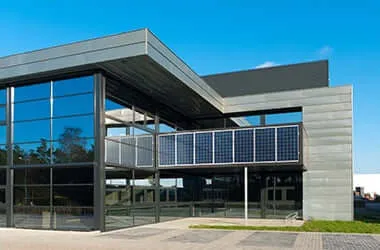1000w solar panel size
Understanding the Size of a 1000W Solar Panel Key Factors and Considerations
Solar energy has become an increasingly popular choice for renewable energy solutions worldwide. With the global trend moving towards sustainable energy sources, understanding the specifications of solar panels, particularly those with a capacity of 1000 watts (1kW), is essential for homeowners and businesses alike. This article will explore the size of a 1000W solar panel and the various factors that influence its dimensions.
What is a 1000W Solar Panel?
A 1000W solar panel setup refers to the total power output capacity of the system under optimal sunlight conditions. This does not mean a single panel generates 1000 watts; instead, it typically denotes the combined output of several panels. Most commonly, a standard solar panel can output between 250W to 400W, meaning that a 1000W solar power system would consist of 3 to 4 panels, depending on their efficiency and size.
Size and Dimension of a 1000W Solar Panel System
While there isn’t a 1000W solar panel in a single unit design, we can calculate the approximate space required for a solar power system of this capacity. Standard solar panels are often around 65 inches by 39 inches (approximately 1.6m x 1m) and vary in thickness, typically between 1.5 to 2 inches.
1. Panel Count To achieve 1000W, assuming an average panel output of 300W, you would need about 3 to 4 panels. 2. Total Area If each panel occupies roughly 17.6 square feet (1.6m^2), the total area required for 3 panels would be about 52.8 square feet (approximately 4.9 square meters). For 4 panels, this would increase to 70.4 square feet (approximately 6.5 square meters).
Factors Influencing Panel Size
Several factors influence the dimensions and overall size of solar panels, including
1. Technology Type Solar panels are primarily made using monocrystalline, polycrystalline, or thin-film technologies. Monocrystalline panels tend to be more efficient and therefore require less space for the same wattage compared to polycrystalline panels. Thin-film panels, while lighter and flexible, usually have lower efficiency, necessitating a larger area to produce the same wattage.
1000w solar panel size

2. Efficiency Ratings The efficiency of the solar panel—how much sunlight it can convert into usable electricity—also plays a significant role. Higher efficiency panels can generate more power in a smaller area, thereby reducing the quantity of area needed for a 1000W system.
3. Manufacturers’ Variability Different manufacturers may produce panels of varying sizes for the same wattage output, so it is crucial to check the specifications for each product.
Installation Space Considerations
In addition to the dimensions of the panels, it's essential to consider the installation space needed. This includes
1. Roof Space For residential installations, ensure that your roof can accommodate the number of panels needed while considering roof orientation, shading, and pitch.
2. Ground Mounts If roof space is limited, ground-mounted systems can be an alternative. These systems will require more space and consideration for access to sunlight and potential obstructions.
3. Regulatory Guidelines Always check local building codes and regulations regarding solar panel installations, as this can affect how many panels you can install, including size and layout restrictions.
Conclusion
Understanding the size and requirements of a 1000W solar panel system is critical for anyone considering solar energy as a viable option. While a single panel may not output that much energy, the combination of several panels can create a powerful and efficient energy solution. By evaluating the panel technology, efficiency, and installation space, potential users can make informed decisions on how best to integrate solar power into their energy plans. Embracing solar energy not only contributes to sustainability but also can lead to long-term cost savings and energy independence. Ultimately, seeking expert advice and conducting thorough research is recommended to maximize the benefits of solar solutions tailored to individual energy needs.
-
Unlocking Energy Freedom with the Off Grid Solar InverterNewsJun.06,2025
-
Unlock More Solar Power with a High-Efficiency Bifacial Solar PanelNewsJun.06,2025
-
Power Your Future with High-Efficiency Monocrystalline Solar PanelsNewsJun.06,2025
-
Next-Gen Solar Power Starts with Micro Solar InvertersNewsJun.06,2025
-
Harnessing Peak Efficiency with the On Grid Solar InverterNewsJun.06,2025
-
Discover Unmatched Efficiency with the Latest String Solar InverterNewsJun.06,2025







